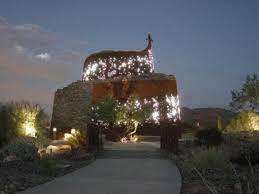Amuru Abam
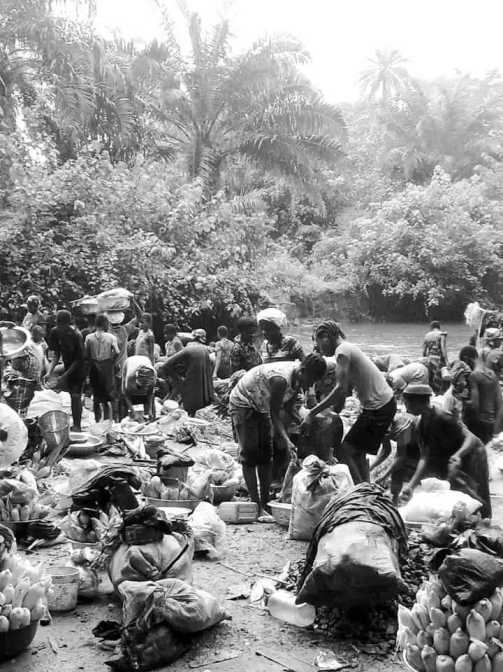

Amuru Abam is a small but mighty community in Abam, in Arochukwu LGA of Abia State, Nigeria. It is in the Northern part of the clan, Ohafor Abam, Ward 1, bounded in the North by Abiriba, in the south by Ozu Abam, in the east by Oboro Ohafia, and in the West by Ndi-Ebe Abam.
This makes the community located in the middle of these villages and shares common boundaries (OGBUGBA-NDU) as established through the spiritual bond of blood covenant, which is the major reason the neighboring villages must never harm one another.
Although, this peace treaty seems not to be effective anymore, as proved by some communal clashes, arising from land grabbing and disputes over the years. The occupations of the people are mainly agriculture, fashion, and Trade.
Notwithstanding, the land has produced many business moguls and tycoons across Nigeria and some, in the diaspora. It has also produced potential farmers and agriculturists.
The people are the major producers of the best Igbo Garri in Nigeria. They also cultivate Yam, plantain, pumpkin (Ugwu), cocoa, cocoyam, Maize, Egusi, and best-quality palm oil, in the largest quantities, the cheapest and most affordable prices. This can be confirmed by visiting their market days.
Their rice farmers are also not left out of this. Amuru Abam is located in the eastern part of Nigeria, in an Igbo-speaking community, and is mainly a Christian land with few traditional worshippers.
It is governed by two factions, Ndi Obi Eze and Ndi Nne. Ndi Obi Eze includes the chief and elders of the land while Ndi Nne are the older women, headed by Eze Nwanyi.
Generally, Amuru is ruled by the chief, Eze Orji Dike of the Uruji kingdom. According to history, Amuru Abam has existed for over 500 years plus, and is older than Nigeria and other communities. It was founded by Uru, the forefather, and also called Uruji Abam.
Amuru Abam People – Abam War Dance
Note that the popular traditional war dance, also known as Egwu Ikperikpe Ogu (in Igbo or Abia dialect) Or Oyaya in Amuru dialect is historically or rightfully called THE ABAM WAR DANCE and not OHAFIA WAR DANCE.
Abam people originated the war dance before the Ohafia people took over from them due to their popularity as a town, people, and local government on their own, and having carried the dance to some special and national ceremonies to entertain some high profile calibers and dignitaries.
Hence, the Abam War dance was popularly tagged the Ohafia War dance. This is not to argue or ridicule any town, but to remind the people of Abam that they are the real owners and originators of the popular war dance.
And hence, it should always be tagged Abam War Dance and not Ohafia War Dance. They only borrowed it from the people of Abam and took advantage of having many socialites, elites, and dignitaries among them.
This is why, to date, no part of Abia has danced it better than the people of Abam. Abam has the best war dance steps and skills. Their war dance singers and dancers, both late and living, are original, better, and more enjoyable than the Ohafia and other parts that adopted the dance.
No comparison, but if you compare the Abam war dance and their song, with the Ohafia dance and other parts of Abia, the result would confirm this history.
This War Dance speaks to and proves the fact that the people of Abam then had mighty warriors who fought many wars, conquered and protected Abam territories, and returned unharmed with the heads of other fallen warriors from other kingdoms and communities.
In order to celebrate them and their bravery, the war dance took its form as the dance and body movements of the dancers demonstrated the way the headless body or trunk of the fallen warriors jerked on the floor during their falls on the swords of Abam warriors.
Abam War Dance simply tells the reactions of the body when the head is beheaded before a warrior finally dies.
The body movements of the war dancers are categorized into four;
The Head Movement: This demonstrates how the heads of Abam warriors looked and observed their counterparts while fighting.
The Hand Movement: This demonstrates how the hands of Abam warriors held their swords and stylishly moved or swift their hands while trying to aim the heads of their counterparts, warriors.
The Leg/Dance Movement: This shows how the Abam warriors moved their legs in the war zone while trying to defeat and behead their counterpart’s warriors.
And finally,
The Chest Pumping/Shaking: It demonstrates morale, fitness, strength, eagerness, and power, showcased by Abam then warriors.
Notwithstanding, Amuru Abam people are not left out in this War Dance history as the land has produced some of the best dancers, drummers, and singers among Abam clans, in the likes of Nna Akuma Igbudu, Nna Egbe Ujaga, Nna Frank, Nna Udo Kalu Mgba, and others, in loving memories.
Visit the land for verifications, and make your research or observations. Meanwhile, the popular Abam War Dance is not just an ordinary dance, it’s a spiritual dance with its meaning.
Amuru Abam People – The Ancient Routes Of Our Forefathers
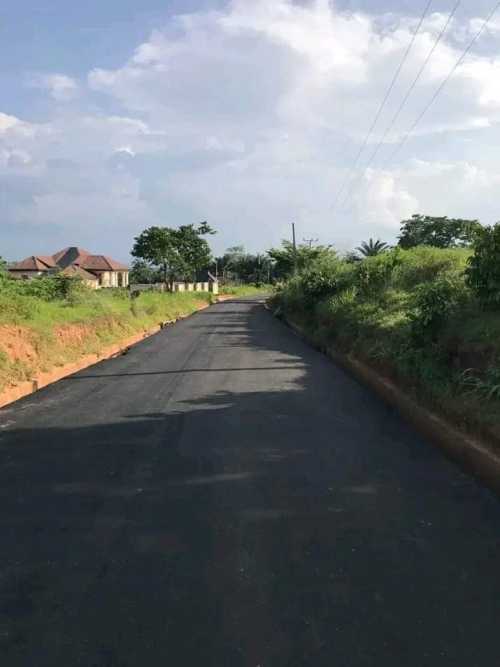

Looking at the Amuru Abam community plan today and its road constructions, one may conclude that Uru, the founding father of Amuru, and other forefathers all came through the Amuru-Ozu Abam route. Well, it’s a no.
History tells us there wasn’t anything like that very route (Uzo Ozu or Ozu to Amuru road) decades ago, we only shared boundaries with Ozu, Abiriba, and Ndi Ebem Abam.
The ancient routes through which Uru and our forefathers came into Amuru Abam were through Ogbele.
From Ogbele, they passed through a stream called Iyi Nwaezelu, until they arrived at Iyi Ozo and finally got to Ebem Ogo where they sat down, broke kola, and ate. This adventure involved two ancestors, Nna Uru, and Nna Oka.
History told us that after eating Kola, Nna Oka went and hung his bag at Ogbu and settled at Ebem Ogo while Nna Uru moved on and walked through another stream, Iyi Nta, and from there, he got to Ali Ogo where he hung his bag at Okpundede.
Hence, this brief article should remind us of how our forefathers came into the land of Amuru and through which routes. Before this research, I had always thought and believed they came through the Ozu-Amuru road.
(Between The Clans Of Ndi-Olugu And Nda-ike In Amuru Abam, Who Is Supposed To Be The Eze Ogo of Uruji And Why Was There Power Shift From The First Child To The Second Child? Let’s Find Out…)
Uruji popularly known as Amuru Abam, in Arochukwu LGA of Abia State, Nigeria, was founded by Uru in the year 1500BC which makes it older than many communities in Nigeria and West Africa entirely.
Historically, Some said Uru came from Elu Anyim- the upper river which was not known. Even Uru as a name is not common.
As history stated, Uru was a hunter sent on exile and later came to settle in a fertile and secure land which he founded and named Uru after his name.
But as people began to migrate, got married, and gave birth, the land of Uru was later named Ama-uru by the people and Uru’s descendants after Uru had passed on.
This is to say that the spelling of Amuru to mean place of Uru, is historically, typographically, and grammatically wrong.
The right spelling and pronunciation is Amauru meaning the place of Uru. Ama is placed, just as Ama Nna’m’ (my father’s place or land) Unless we assume the AM(A)URU, became silent.
According to Uru, he came with Abam Onyerubi during his journey. Abam Onyerubi founded the Abam clan while Uru discovered Amuru which is why Amuru is also called Amuru Abam Onyerubi. Some said Uru and Abam were brothers.
Some said they came together to these parts of Abia state(Abam). Some said Abam Onyerubi was already there before Uru came for safety and in search of greener pasture.
Amuru Abam then, was a desert, an empty land. In all, history is dynamic and revolves around many people and factors.
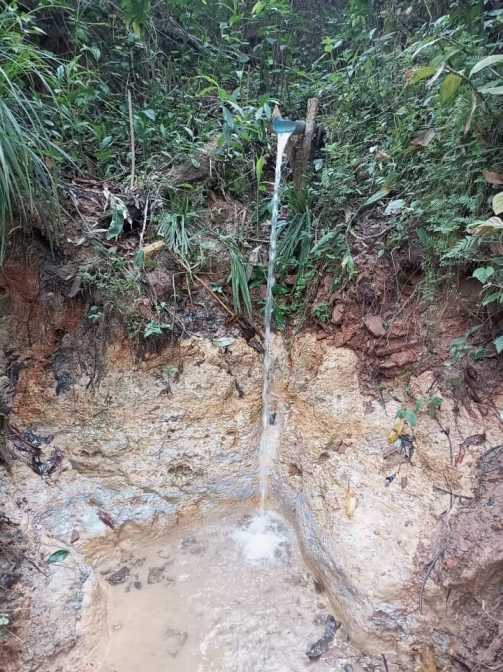

Notwithstanding, they are other clans in Abam Onyerubi, which means Abam Onyerubi founded the entire Abam until his descendants or other forefathers began to migrate and formed other clans in Abam which included Atan, Idima, Ndiebe, Ozu, and the rest of them.
Uru settled at Ali Ogo where he bore children, NwaIke, the first son (Okwara), and also, Olugu, the second son of Uru (Ulu Nwa).
Historically, Uru had two sons, Ike or Nwaike and Olugu. So, in all, they are just two recognized paternal families of Uru in Amuru Abam which are the clan of Ike and the clan of Olugu whose descendants are the Nda-ike and Ndi-olugu.
Nwaike the first son was supposed to be the Eze Ogo or king of Uruji (Amuru) but was disowned by his father, Uru, for defiling his wife, his stepmother.
Though, some said the dispute was due to the fact Nwaike was disrespectful and full of pride by accusing Uru of not being a warrior and never beheaded a head during the war.
So, he insulted his father and termed him “Ujo Gba aka”. And so, Uru cast him away where he migrated to form the clan of Ike which is known today as Nda-lke compound or clan.
Historically, if not for the dispute between Nwaike and his father Uru, Eze Ogo, or kingship
Amuru Abam People – Life Of Nna Agwara
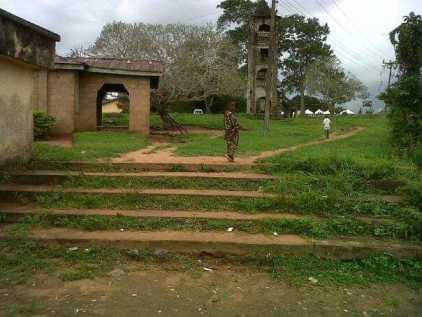

Agwara, an ancestor of Amuru Abam, was a contemporary of Uru, the founder of Ama-uru (Amuru).
According to history research, Amuru is referred to as Ali Uru and Ali Agwara but much is not known about the man, Agwara.
Agwara is a cofounder of Amuru. Although, not clear if he had children or not unlike Uru who had both male and female children even though, not much reference to his female children because then, only male children were valued as it was believed only they bore the names of their fathers while the females bare that of their spouses or husbands.
The present-day Ndi- Nkwo compound or clan bears the name, Nkwo Akuma rather than Agwara. According to our elders during an oral interview, revealed that Akuma was the paternal younger brother to Agwara who took over Agwara’s inheritance after he passed on without a child.
Not just Akuma but all of Agwara’s paternal relations took over his place in Amuru Abam.
That name Agwara is only mentioned in reference to pouring liberation (breaking of kola and pouring of schnapps on the floor) when there is a gathering or some traditional rites which are done by the elders in respect to ancestor Agwara as you would always hear the elders chants or says “Ali-Uru, Ali-Agwara before breaking the kola or pouring the schnapps on the floor.
The fact is that Nna Agwara has a name in Amuru history as the second person after Nna Uru which is the reason his paternal brothers sometimes act as the prime minister or Onowu, meaning the people next to the Igwe or we call them the second in command after the Eze ogo of Uruji.
According to history, whatever the Ndi-Nkwo paternal relations own, they own it in the name of Nna Agwara. Hence, Ndi-Nkwo as a clan rightfully belongs to Nna Agwara and not Nkwo Akuma who was Agwara’s half-brother.
Who Are The Amuru Abam People?
Amuru Abam people do not go to where they are not invited. Even the poorest person would want to keep his or her respect and would prefer to drink garri than go for an occasion where he or she isn’t invited if you like to kill all the cows and cook all the food in the world.
They are very respectful and submit to their elders but once they are pushed to the wall, they would react back not minding the Elder’s position in the society.
Amuru Abam people do not exploit men in marriage like some other communities do in the name of culture, where you have to use all your life savings to pay the bride price of a woman you love.
Just prove to them you are man enough and love their daughters and sisters, and they would give her to you in marriage at an affordable price. Not after marriage, you begin to beg for food.
Amuru people are related through matrilineage clans (Ikwu nne, the mother’s clan)
The people of Amuru value respect more than money or wealth.
No matter how rich you are, if you don’t respect yourself, you don’t respect the last person in the community and you don’t respect the society as a whole, they would never regard you and your money, your presence would never matter to them.
They care more about strangers than their own people believing the lives of those strangers are in their hands and if by any means, anything happens to them, they would be held accountable.
The women are more hardworking than the men. Without these women, farming activities which generate the majority of the income won’t be possible.
In times of child care and upbringing, the mothers do more of it than the fathers. They can sell all their valuables to train their children and make sure they are happy. Kudos to the women and the men who also support their children.
Amuru Abam youths are industrious and hardworking. They are good at traveling to places as long as there is a better future for them there.
No matter how wealthy a person is in every family, others can never bow nor depend on them, they would prefer to go work and hustle for themselves.
For now, only a few go to school, the majority are into trade and handwork and that is good because everyone can’t do the same thing in the community and get similar results.
No matter how poor and hungry a person is, once you feed him or her and insult them, that is the end, you would never see them again. They value respect and self-discipline more than anything.
In the history of Amuru Abam, our women are the most cultured women in the world, they value their natural beauty, and you can never see any bleached woman.
They dress like married women and not like harlots. They are so submissive, patient, understanding, and supportive to their husbands and even children.
Women are machinery for societal development. They contribute more to see the progress of the community both through manual labour and otherwise.
Rather than using their children’s school fees or feeding money to maintain themselves, they rather use their maintenance money to feed and take care of the family.
The parents don’t joke with their firstborns and lastborns.
They don’t play politics of emotions and interest. They play politics of competence. If they try you and you fail them, they would never compromise by writing you off.
They are a small but independent community who do not wait for their government to do certain things but would rather take it up upon themselves either as levies, dues, or freewill donations.
Their women’s leadership is more powerful and formidable than every other wing of leadership in the land. Once they are out for you, they can never compromise.
No matter your influence or the kind of family you belong to, once you are found wanting or guilty of any offense, you must face it with penalties that would also involve your family.
You may abuse a man and go scot-free but don’t dare abuse any woman in the community, you won’t go unpunished.
Only in this community, matrimonial violence isn’t rampant. Whatever case you ought to have with your partner, it must be within your home but if you chose to push it out to the public, the community would beat the wooden gong for you(Ekwe) and that means big trouble for the abuser.
They can fight themselves as it is everywhere but if another person in another community dares to touch or humiliate their brother or sister, they won’t fold their hands and watch.
Those in the community are majorly into agriculture and cultivate all kinds of crops.
The Amuru Ikoro (wooden gong)


Ikoro is a traditional, wooden instrument in Igbo land with a cylindrical shape. It is used for praise, dancing, and wrestling. But in Amuru Abam, there is an Ikoro different from other Ikoros we see.
This very Ikoro is sacred and secret. According to history, it’s immovable as it is staged in a particular secret room in Ebele and not seen by women or any man who has not attained the highest age as an elder in the community.
Unlike normal Ikoro in Igbo land, this very Ikoro in Amuru Abam is not exposed. It was brought by Uru the founding father of Amuru Abam in respect and remembrance of his warriors who went to war, beheaded several heads of their enemies, conquered, and returned home alive with enemies’ heads.
Amuru Abam community was one of the communities in Nigeria and West Africa that beheaded human heads as a tradition in the past during the war. In fact, it was a norm. Although it was rumoured they ate human heads then but no proof of this assertion.
During oral interviews with some elders of the community, I was told these heads were not eaten by the warriors. Rather, the god, Kamalu.
This was the proof: After the war, the warriors usually returned with human heads, and first showed themselves to Ikoro before taking the head to Kamalu.
The head stayed in Kamala and decayed, leaving just the skulls.
After some days, when it was time to celebrate the warriors, they returned to Kamalu in their warrior attires, with Nzu on their bodies, and picked up the skulls, all matched to Ebele for the celebration.
So, if they ate the human heads, history didn’t say so.
Now, back to the Ikoro. Those days, when the warriors of Amuru returned alive, they first went to Ikoro and showed themselves as a sign of allegiance and humility.
Hence, their names are spiritually registered in the Ikoro as one who went to war and came back alive with heads. So, during a festival where the Ikoro is beaten, the Ikoro automatically mentions their names as great people.
To date, the Ikoro is still there at Ebele and can never be moved from the community or seen with the naked eye unless the elders have attained their age.
And to date, during a festival, when the Ikoro is beaten, it still mentions the names of Amuru Abam ancestors and warriors who did exploits and died thousand years ago. It’s a reality and not a tale or assumption. This part of Amuru’s sacred tradition is still active to date.
Who Is Truly Uru?
Amuru Abam founded by Uru, one of the sons of father Abam, an ancestor and founding father of all Abams, is one of the twenty-sixth clans or villages in Abam, Arochukwu LGA of Abia state, Nigeria.
The right pronunciation or name of Amuru is Ama-Uru, meaning, the place or kingdom of Uru.
Although, the identity of Uru is not quite sure as many claimed he came from Elu-Anyim(somewhere in upper cross River) while some claimed he came from the Northern part of Abam(somewhere in Abia state)
Among all these claims, one can easily believe Uru may have come from the upper cross river and therefore linked or interconnected the people of Amuru to cross the river as evidence is seen in some of their culture and tradition like Ekpe, Akan(g) and Obon(g).
Also, names such as Ndem (Efik-calabar). Even though Amuru seems to have a different meaning of the Ndem but history has it there is a link between the Efik Ndem and Amuru/Abam’s Ndem.
Other common terms include; Ekperipke or Ikperikpe(Drum), Nsibidi or Nsibiri, which is an ancient hieroglyphic writing or sign. However, they are no records to ascertain his place of birth.
Uru was said to be a great ancient warrior, wanderer, hunter, and explorer who was on a mission in search of a greener pasture, until he discovered the land, Amuru, which he realized had the most suitable soil and pasture, and decided to dwell there.
The first time he stepped into Amuru, he settled at a place currently known as Ali Ogo (beside Ebele), where he hung his bag on the Okpundede tree, one of the populous trees in Amuru which produced some attractive, colourful flowering plants with a taste of nectar and fragrance.
Almost every child born in Amuru ate from this tree.
Amuru was a refugee during wartime and during the Nigerian civil war. It was also a shelter for some past heroes like Ekeukwu Efigbua Achara, who with his fingers, lifted a mighty rock from Ihu Nkuma to Ebem Ogo.
Amuru Abam Has Just Four Days In A Week


Just like every other Igbo community in Nigeria, the Amuru Abam community have just four days in a week, unlike the seven days in the Western calendar.
These four days of the week include the Eke, the Orie, the Afor, and the Nkwo.
For the people of Amuru Abam, their activities vary on these very days of the week: Eke day is for cassava farm where young and old all floods their various farmlands to harvest cassava and process them into Garri.
On Orie day, popularly known as Orie Afia, it becomes a market day for the people of Amuru Abam, where mainly women take their farm products to the market for sale.
Also, note that these days both people from far and near lands bring their goods to sale in the Amuru Abam market while others come to purchase goods.
Then, Afor day is popularly the market day for our neighbouring community, the Ozu Abam people. The people of Amuru also flood this nearby community to buy and sell some goods.
Finally, the Nkwo day. This is popularly an Abibriba market day. On these days, the people of Amuru go to the Abiriba community to buy and sell their goods.
Remember, Amuru Abam is in the Northern part of the clan, Ohafor Abam Ward 1. And so, Amuru is bounded in the North by Abiriba, in the south by Ozu Abam, in the east by Oboro Ohafia, and in the west by Ndi Ebem Abam and so, they share common boundaries with these neighbouring communities.
Hence, migration of people into any of the communities is easy and common during their market days. In the ancient days, it was by foot and bicycle. Even now, because the distance is trek able.
Although, modern facilities have made movement easier and faster and people take bikes and cars to these very communities during each market day.
This brief history is to remind us that Amuru Abam has just four days in the week and not seven days as the Western calendar entails. The four days are Nkwo, Eke, Orie, and Afor, and still, align with Igbo days of the week.
(The Egbenta Tree- Greatest And Oldest god of the land)
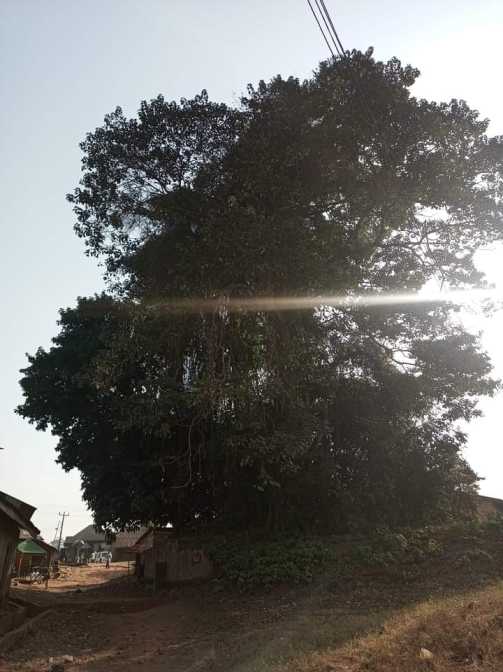

This is one of the tallest trees in Amuru Abam, located at the center of the community from every angle or distance, one can easily see it.
This is to measure the extent of its height. The tree is mounted in front of the Ndi Oju compound or clan, just at the road. The god is fed with blood and anything that live but not humans. It’s either a white fowl or Puppy.
This sacred tree is regarded, honored, praised, and worshipped as a great god to date. If other gods are gone due to Christianity, Egbenta still remains.
It is a powerful tree full of might, power, strength, and authority. No matter the weather or storms, Egbenta is never fallen. During the dry season, while other trees fall, dries off, and withers, Egbenta is fresher, springing up new leaves and shading off old leaves.
An ancestor named Akwuma brought this sacred tree to the land and mounted it in front of the Ndi Oju compound after an ancestor from the clan accepted to become a caretaker of the god.
So, Akwuma instructed that only his descendant (Ihuokwe or Ndi Oju) have the right to access the god. This is why only this clan takes care of the god, makes sacrifices, worships it, and enjoys its benefits to date.
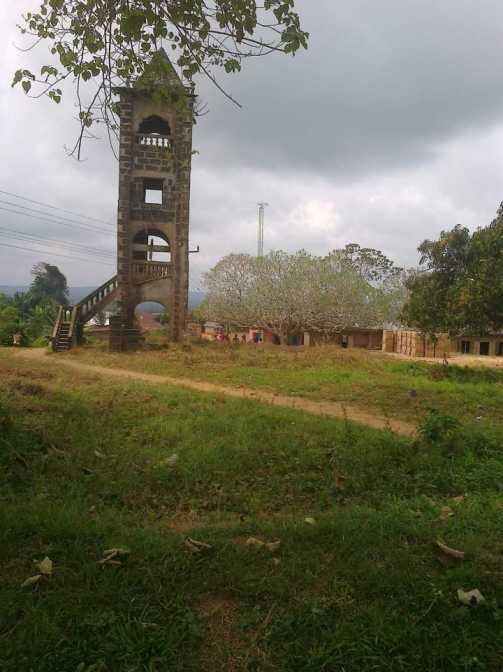

The rightful name for Egbenta is Arunsi Akwuma (god of Akwuma). It is in connection to every other god in Amuru, dead or alive. So, its stronghold and source of strength is mysterious and undefined.
The tree was to protect, provide and promote the land entirely. It is also, a source of wealth and treasure to the descendants of Akwuma to date as people from far and near come to pay homage to the Ndi Oju clan with gifts, money, and livestock of all kinds for the good work of the god.
If the community is over 500 years plus, this ancient god tree is likely of the same age too.
Those within the southeast or south-south who witnessed the Biafra war and found safety within the Amuru Abam community can testify to the strength of this god.
It became a camp for refugees and protected the villagers and strangers from bullets and repelled attacks from the enemy armies. It also got its bullets and war armours trapped by its strength and to date, the rods, irons, and rigs of those trapped armours are still in this place.
Many have entered here, they saw it, we played inside here while we were little. But you must not defecate or eat anything in it. Mostly, snails are always found here. The snails are referred to as Ikolo Egbenta.
During an oral interview I carried out among some older people in the community, I was told the Egbenta itself moves about mainly at night and for good. One of them said the god in those days moves in the form of a butterfly in the air with fire.
If you are the type that usually slept a lot and everyone went in and left you all alone at night, the god in its movement would fly to your face and wakes you up to go in, that it’s late.
Another Oral interview I carried out was a testimony of a man who also witnessed the Biafra war and needed to go rescue his younger brother who lived in Ibadan at the time Igbos were massacred.
He went to the gods and made supplications to them, and the god led him all through from Amuru Abam till he got to Ibadan and returned safely despite the fact a lot were killed in his presence but with the help of the god, he brought his brother home unharmed.
Another oral interview stated how farmers prayed in the name of Egbenta before heading to the farm against any weapons. As long as the farmer dedicated his tools before the god, he or she shall go and return unharmed.
They are several reasons our forefathers worshipped the god as their creator and many called him Chukwu Okike Abiama or Nna anyi nke bi na igwe, meaning, our father in heaven and God the creator.
As these names are called, our fathers pour schnapps on the ground to appreciate and honour the god. It was later, during the coming of Christianity, our people realized that Egbenta wasn’t the God of creation or the most powerful but the God of the Christians.
In those days, Egbenta was known as the god of refuge that people ran into for safety. So many children as of then who do not want to go errands for their parents or farm would always run to the tree for safety.
In so doing, your mother or father would never beat nor touch you for refusing to go to the farm because they would warrant the wrath of the god if they dare beat you.
And if they are any offenses committed by the child here, the traditional mothers are the ones to appease the gods on behalf of the child with a white chick, loins, bare body, and foot.
Egbenta forbids noise and disturbances to date. You don’t take speakers near it, else, it blows off or everything shut down automatically. It also forbids weapons. Those days, you don’t point guns or raise weapons around it.
Else, it backfires on you and you end up being injured. This was why you could never bring weapons into the Ndi Oju clan or compound nor shot guns within Egbenta or the clan.
Egbenta is a god of justice and does not kill the innocent or do evil. So, it is a white and pure god. It only kills those who are guilty. And the guilty ones are those who promise and fail to redeem their promises after god had fulfilled their requests.
When the god comes to war, his punishment starts with the family members of the offender before killing the main offender. In order to appease the god, the offender must redeem his or her pledge or returns back that which he or she has taken from the god.
Then, the chief priest makes sacrifices to appease the gods. The requirement for the sacrifices depends on the height of the offense committed and the number of days. But majorly of the gifts includes a white chick(Nwa Okuko) and a puppy (Nwa Nkita).
Chief priest(Eze Mmuo) is selected among the descendant of Akwuma (Ihu Okwe/Ndi Oju) and regarded as the head, mouthpiece of the god and a mediator between the people and the god through whom the god speaks among the people or the people speaks to relate to the god.
During a sacrifice, the priest and worshippers of Egbenta walk about bare-bodied and footed but with just their trousers or shorts or wrappers and with a chick or puppy.
At this period, they do not talk to anyone nor answer greetings not even to a member of their family. Even if their house is on fire and anyone runs to pass the information to them, they won’t mind until after the ritual. That is because they are been led by the spirit of the god and not of themselves.
This very day is usually, the most holy day of their lives, days of fortifications, purity, honor, and strength, a day you can make any request and the god answers.
At this period, the worshippers avoid women with twins, and must not eat nor accept anything from them. During this period, the worshippers do not sleep among people or families, they usually sleep in Obi Ndi Oju in front of the tree god till the ritual is completed.
At the end of the ritual rite, they will eat, drink and make merriment. They usually cook yam with goat and the blood is used to prepare the meal.
Because of Egbenta, Women are forbidden to give birth to twins in Amuru Abam, especially in Ndi oju as it is an abomination.
This brought about the killing of twins in Amuru Abam and even though this act of killing of twins has been abolished due to Christianity, Egbenta does not accept twins, and women who give birth to twins do not live in Ndi Oju compound, their husbands send them to another clan to live and it’s still so till date.
Egbenta is the last place the Ekpe masquerade pays homage to before entering Ebele during the Ekpe festival. Else, that cutlass used to behead the goat refuses to function.
And that is the reason, after the successful beheading of the goat by the masquerade, he first raises the cutlass up to the sky facing Egbenta, which means appreciation to the god.
Christianity aside, the god is still active to date because his worshippers have not stopped worshipping it. The more the worship, the more they revoke and invoke more life and strength to it.
Ndi Oju people are his major worshippers and caretakers. The god gave wealth to their forefathers and according to history, no clan was ever richer than the fathers from Ndi Oju clan who got the title of Ndi Ogbu Efi.
The only clan that killed Nama during ceremonies while others killed fowl and goats because they were extremely rich.
Egbenta is a stranger-god that took its journey and origin all the way from ancient Efik- Calabar, cross river, Nigeria. In my research and trying to find its root, It is linked to the Ndem institutions, a large building, and organisation comprising priests and priestesses whose lives were designated to serving a deity, Usani Abasin.
The Ndem institution serves as a link between the Efik people and the Supreme Being, “Abishai Gibbom”, corrupted today as “Abasi Ibom” God omnipotent.
All the founding fathers of the Ndem’s institution and the Efik Ibokun clan did exploits and were all successful. They were known to be the richest clan among other clans in Efik Calabar and that brought about the name, Ndem, to Amuru Abam and Abam.
Although, people see it in a different way and give it a different meaning. But to the people of Ibokun, when you hear Ndem, you hear wealth. In Amuru Abam, Ndem and his descendants were the wealthiest people in history.
Recall, the Ibokun people of the Efik Calabar once lived among the people of Arochukwu. They decided to migrate because they refused missionaries from compromising their faith in worshipping their god Usani Abasi.
A number of clan deities came immediately to mind when discussions on “Ndem Efik Iboku” were thrown open. Worthy of note among these deities include Anantigha and Anansa, male and female deities respectively, of the Enwang people.
The Enwang, a most deeply religious people, positioned their two deities at the two ends of the Calabar River frontage (Ata Akpa). I believe some of us must have heard this name, Ata Akpa. It’s not an Igbo name or Amurian name and doesn’t mean anything in our dialect.
You can make your own research. But whoever is called Ata Akpa, is also called Ezeiyi. (King of the River).
Anansa is the most beautiful goddess of the Efik people, an ancient marine spirit that lived in the ocean and among the Efik people. Going further would bring about Ididem Abasi which we have all heard of.
So, Egbenta, one of the oldest gods in Amuru Abam took its origin and source from a faraway land and linked it to several dreaded and all-powerful deities.
In the past, only people with good hearts and free minds were permitted to worship and stand before Egbenta.
As its worshipper, you must come before him with clean hands, meaning, you must have not stolen, killed, poisoned, think evil, conspired against anyone nor stand where people plan evil against another. But to date, they are a lot of compromises among its worshippers.
To date, the people of Amuru Abam still believe in the exploits of the god and see it as a good god that is harmless.
Now, the question is, what happens if the worshippers of Egbenta pass away? Would the tree god still live or also pass away? I am still on research even though, I have gotten some of the answers to these questions.
WRITTEN BY: K. N. PETER

